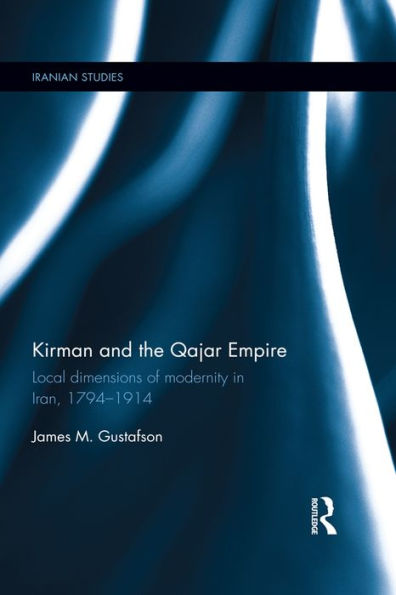Despite its apparently peripheral location in the Qajar Empire, Kirman was frequently found at the centre of developments reshaping Iran in the 19th century. Over the Qajar period the region saw significant changes, as competition between Kirmani families rapidly developed commercial cotton and opium production and a world renowned carpet weaving industry, as well as giving strength to radical modernist and nationalist agitation in the years leading up to the 1906 Constitutional Revolution.
Kirman and the Qajar Empire explores how these Kirmani local elites mediated political, economic, and social change in their community during the significant transitional period in Iran’s history, from the rise of the Qajar Empire through to World War I. It departs from the prevailing centre-periphery models of economic integration and Qajar provincial history, engaging with key questions over how Iranians participated in reshaping their communities in the context of imperialism and growing transnational connections. With rarely utilized local historical and geographical writings, as well as a range of narrative and archival sources, this book provides new insight into the impact of household factionalism and estate building over four generations in the Kirman region. As well as offering the first academic monograph on modern Kirman, it is also an important case study in local dimensions of modernity.
This book will be of interest to students and scholars of Iranian studies and Iranian History, as well as general Middle Eastern studies.
Despite its apparently peripheral location in the Qajar Empire, Kirman was frequently found at the centre of developments reshaping Iran in the 19th century. Over the Qajar period the region saw significant changes, as competition between Kirmani families rapidly developed commercial cotton and opium production and a world renowned carpet weaving industry, as well as giving strength to radical modernist and nationalist agitation in the years leading up to the 1906 Constitutional Revolution.
Kirman and the Qajar Empire explores how these Kirmani local elites mediated political, economic, and social change in their community during the significant transitional period in Iran’s history, from the rise of the Qajar Empire through to World War I. It departs from the prevailing centre-periphery models of economic integration and Qajar provincial history, engaging with key questions over how Iranians participated in reshaping their communities in the context of imperialism and growing transnational connections. With rarely utilized local historical and geographical writings, as well as a range of narrative and archival sources, this book provides new insight into the impact of household factionalism and estate building over four generations in the Kirman region. As well as offering the first academic monograph on modern Kirman, it is also an important case study in local dimensions of modernity.
This book will be of interest to students and scholars of Iranian studies and Iranian History, as well as general Middle Eastern studies.

Kirman and the Qajar Empire: Local Dimensions of Modernity in Iran, 1794-1914
198
Kirman and the Qajar Empire: Local Dimensions of Modernity in Iran, 1794-1914
198Related collections and offers

Product Details
| ISBN-13: | 9781317427902 |
|---|---|
| Publisher: | Taylor & Francis |
| Publication date: | 07/16/2015 |
| Series: | Iranian Studies |
| Sold by: | Barnes & Noble |
| Format: | eBook |
| Pages: | 198 |
| File size: | 3 MB |
